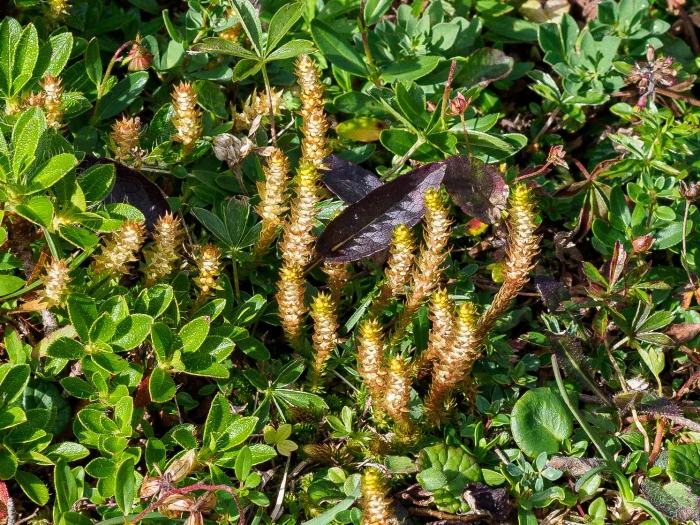Lesser Clubmoss
(Selaginella selaginoides)
Lesser Clubmoss (Selaginella selaginoides)
/
/

rainerburkard
CC BY 4.0
Image By:
rainerburkard
Recorded By:
Copyright:
CC BY 4.0
Copyright Notice:
Photo by: rainerburkard | License Type: CC BY 4.0 | License URL: http://creativecommons.org/licenses/by/4.0/ | Rights Holder: rainerburkard | Publisher: iNaturalist | Date Created: 2021-08-18T14:49:16-07:00 |

























Estimated Native Range
Climate Requirements for Enid, Oklahoma
| This Plant | Your Site | Plant Suitability for Your Location | ||
|---|---|---|---|---|
| • Precipitation | 52" - 62" | 34" | Your precipitation may be insufficient for this plant. Irrigate N" / year. | Irrigate N" / year |
| • High Temp. | 56°F - 69°F | 94°F | Your summers may be too hot for this plant. | Too hot |
| • Low Temp. | -1°F - 31°F | 24°F | Your winter temperatures are normal for this plant | Excellent |
This plant should grow well at your location with about N inches per year (Y minutes per month) of irrigation.
Summary
Selaginella selaginoides, commonly known as lesser clubmoss, is a non-flowering plant that is part of the Selaginellaceae family. It has a circumboreal distribution, found in a variety of moist habitats including bogs, shores of streams and lakes, wet cliffs, grasslands, and dune slacks. Lesser clubmoss is particularly adapted to cool, mountainous regions in the Northern Hemisphere. This perennial herb typically forms dense mats with its creeping stems and has erect fertile shoots that produce cones bearing both megasporangia and microsporangia, which are involved in reproduction.
Lesser clubmoss is valued for its delicate appearance and is sometimes used in rock gardens or as a ground cover in moist, shaded areas. It requires consistently moist soil and does not tolerate drought well. While it prefers partial to full shade, it can also adapt to brighter conditions if sufficient moisture is present. In cultivation, it is relatively low-maintenance but may need protection from excessive heat or dryness. It is not known to have significant problems with diseases or pests, but habitat destruction has led to declines in some regions.CC BY-SA 4.0
Lesser clubmoss is valued for its delicate appearance and is sometimes used in rock gardens or as a ground cover in moist, shaded areas. It requires consistently moist soil and does not tolerate drought well. While it prefers partial to full shade, it can also adapt to brighter conditions if sufficient moisture is present. In cultivation, it is relatively low-maintenance but may need protection from excessive heat or dryness. It is not known to have significant problems with diseases or pests, but habitat destruction has led to declines in some regions.CC BY-SA 4.0
Plant Description
- Plant Type: Ferns
- Height: 0.1-0.3 feet
- Width: 0.3-0.6 feet
- Growth Rate: Slow
- Flower Color: N/A
- Flowering Season:
- Leaf Retention: Evergreen
Growth Requirements
- Sun: Part Shade, Full Shade
- Water: Medium
- Drainage: Medium
Common Uses
Low Maintenance, Potted Plant, Rock Garden
Natural Habitat
Circumboreal distribution in a variety of moist habitats including bogs, shores of streams and lakes, wet cliffs, grasslands, and dune slacks, particularly in cool, mountainous regions
Other Names
Common Names: Lesser Clubmoss , Clubmoss , Northern Spike-Moss , Meadow Spikemoss
Scientific Names: Selaginella selaginoides , Bernhardia spinosa , Lycopodina spinulosa , Lycopodioides selaginoides , Lycopodium bryophyllum , Lycopodium ciliatum , Lycopodium selaginoides , Selaginella ciliata , Selaginella selaginoides , Selaginella selaginoides
GBIF Accepted Name: Selaginella selaginoides